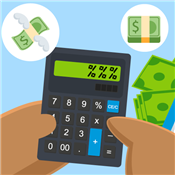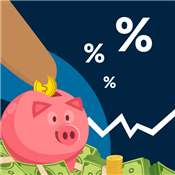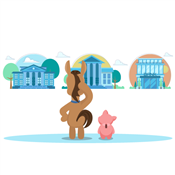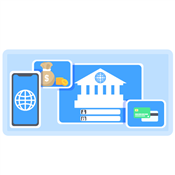Can You Add Money to a CD?
Ad Disclosure: This article contains references to products from our partners. We may receive compensation if you apply or shop through links in our content. This compensation may impact how and where products appear on this site. You help support CreditDonkey by using our links.
Generally, you cannot add more money to a CD once it is opened. However, there are two things you can do if you want to deposit more funds. Read on.
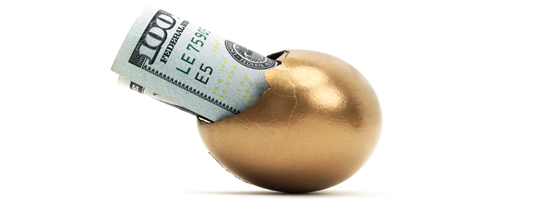 |
You see a great interest rate on a CD. You don't want to miss out on the rate, so you open the CD with whatever money you have now.
A few months later, you have more savings and would like to add it to your CD. Are you allowed to?
Usually, a CD does not allow you to add funds once it's opened. But there are special add-on CDs that let you make additional deposits during the term. If that's not available to you, there are other strategies to maximize your returns.
How Certificates of Deposit Work
CDs (certificates of deposit) are a type of savings product. They require you to deposit a fixed amount of money for a fixed amount of time. You get a fixed interest rate for the entire duration of the term.
This gives you guaranteed interest earnings over the whole term. Another benefit is that even if there's a federal interest rate cut, your CD rate stays the same. This makes CDs an attractive, secure option for short-term savings.
Typically, the longer the term, the higher interest rates. So you may be tempted to open a 5-year CD to get better rates. But not being able to add money to it could make it a turn-off.
If you're looking for flexibility to add more funds, you have a couple of options.
1. Add-On CDs
Add-on CDs are a special type of CD that allows you to add additional funds during the term. The conditions will vary by bank. For example, some may only allow you to add more funds once, while some may allow for unlimited additional deposits. But these are pretty rare; very few banks offer add-on CDs.
Just like a traditional CD, your interest rate will be locked-in for the entire term. Any additional deposits will earn the rate offered when you first opened the account.
And keep in mind that while you can add more funds, you cannot withdraw until the CD matures.
While an add-on CD sounds like a great idea, make sure you're getting the best interest rate. If the interest rate is really low, it may not be worth it. In that case, it's probably best to just look for a regular CD with a higher rate.
This brings us to the second option.
2. Create a CD Ladder
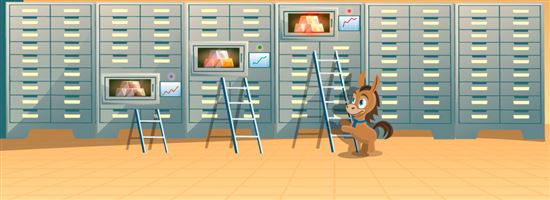 |
| © CreditDonkey |
Alternatively, just simply open a new CD account whenever you have additional money to deposit. There's no limit to how many CDs you can open. You can even shop around at different banks to see which one is offering the best rates currently.
One smart strategy is called a CD ladder. This means splitting up your investments into different CDs with different maturity dates.
- Start with $1,000 in a 1-year CD
- 3 months later, open a new 1-year CD with $500
- 3 months later, open a new 1-year CD with $500
- And so on…
With this strategy, you can regularly add money into your CD plan. Of course, you have total control over the amount, term, and interval.
This also ensures that you'll always have a CD that will mature soon. This way, not all your funds are tied up for such a long time. The "ladder" will provide you with a consistent cash flow. As each CD matures, you can withdraw the money if you need it, or reinvest into a new CD.
As a bonus, if interest rates happen to increase, you can open a new CD with a higher rate. However, it can go the other way too. If interest rates decrease, your new account will have a lower rate.
High-Yield CD Rates - Up to 4.30% APY
- No fees
- $1 minimum deposit
- FDIC insured
| Term | CD Rates |
|---|---|
| 3 Month | 4.30% APY |
| 5 Month | 4.10% APY |
| 6 Month | 4.30% APY |
| 9 Month | 3.95% APY |
| 12 Month | 3.95% APY |
3. Use a High-Yield Savings Account
Of course, you can always just keep your savings in a high-yield savings account instead of a CD, and exercise some control in not touching them. A savings account allows you to add to it whenever you want with no limit. But you are limited to 6 withdrawals per month.
Online banks will offer better interest rates than traditional banks. A lot banks offer competitive rates on-par with (or even higher than) CD rates. However, the interest rate can change at any time depending on the economy. So your rate can decrease suddenly.
CIT Bank Platinum Savings - $300 Bonus
- Transfer a one-time deposit of $50,000+ for a Bonus of $300
- 4.10% APY with a balance of $5,000 or more
- 0.25% APY with a balance of less than $5,000
- No monthly maintenance fee
- Member FDIC
Bottom Line
CDs require some commitment. You have to deposit a fixed amount of money and usually cannot add to it. If you want some flexibility, the best option is to create a CD ladder, which will allow you to add more funds, as well as have regular withdrawals.
Keep in mind that CDs are meant for storing savings that you won't need immediately. Make sure you have a separate emergency fund in a regular savings account that you can access at any time.
References
- ^ Associated Bank. Certificate of Deposit, Retrieved 4/30/2023
- ^ Bank5 Connect. 24-Month Investment CD, Retrieved 4/30/2023
- ^ First Horizon Bank. Add-On CD, Retrieved 4/30/2023
- ^ BMO Harris Bank. Certificate of Deposit, Retrieved 4/30/2023
Write to Anna G at feedback@creditdonkey.com. Follow us on Twitter and Facebook for our latest posts.
Note: This website is made possible through financial relationships with some of the products and services mentioned on this site. We may receive compensation if you shop through links in our content. You do not have to use our links, but you help support CreditDonkey if you do.
|
|
| ||||||
|
|
|


